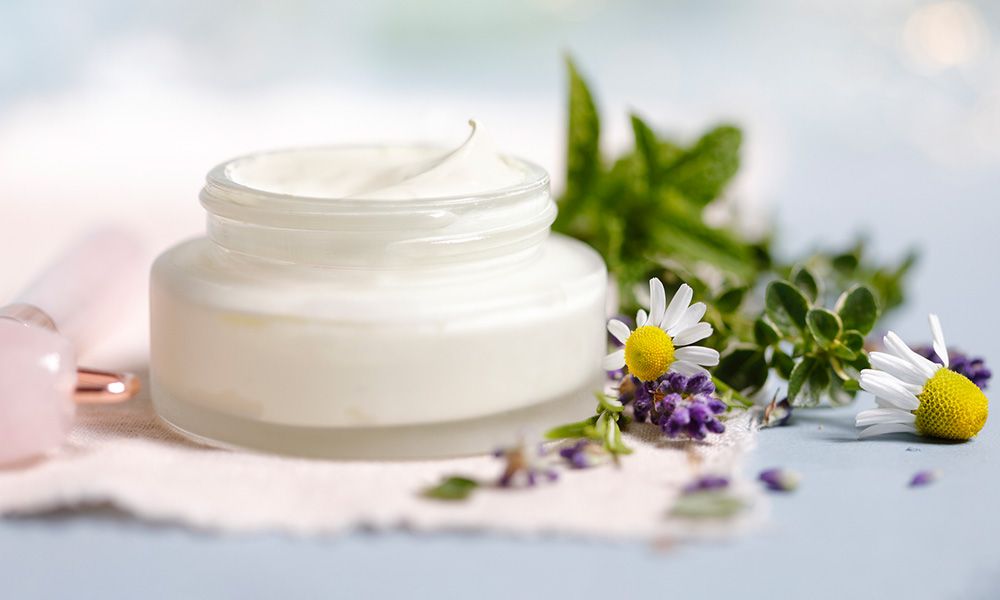Featured
Why Packaging Matters for Healthy Skin

By Charlene Bollinger
January 17, 2024
Skincare products can come in all kinds of shapes and sizes—and container types. There is a reason why we chose the materials we did for both the CHARLÍS Face Collection and CHARLÍS Body Collection. When it comes to both safety and beauty, we think ingredients matter both inside and out.
The Damage Plastic Packaging Can Cause
Can you guess what material surrounds the majority of skincare products on the market (and on the pharmacy shelves) today? If you guessed plastic, then you are right. In fact, global sales of squeezable plastic tubes alone surpassed $700 million in 2018. (1)
“Plastic remains as the most preferred material by the manufacturers in the overall market due to its cost-effectiveness, flexibility and wide usage across various beauty applications,” according to a report put out by Grand View Research.
While plastic may be convenient and cheap for manufacturers to obtain and use, it is sadly by far the unhealthiest option for cosmetic and skincare packaging. Harmful substances that exist on the “outside” of a liquid, cream, or lotion product can leach into the product itself, especially if the product is exposed to high temperatures (such as sitting inside of a hot car or in your purse on a hot day).
Amongst the host of toxic chemicals that go into the creation of plastic containers, however, two rise to the top: BPA, or Bisphenol A, and PFAS, or per- and polyfluoroalkyl substances.
BPA
BPA is an organic compound that is utilized in the making of plastics as well as epoxy resins. It has been used in the creation of a variety of consumer goods, especially plastic water bottles and containers used for sundry and cosmetics, since the 1960’s. Today, pretty much everyone has some amount of BPA in their system starting at birth. (2)
BPA is also a xenoestrogen, which means it can mimic aggressive forms of estrogen in the body. Exposure has been linked directly to endocrine disturbances (including in growing fetuses and children), as well as obesity, type 2 diabetes, heart disease, and cancer. (3) Recent evidence has also found that BPA in the system may make some chemotherapy drugs ineffective. (4)
And a short note about “BPA Free” labels. Some manufacturers who claim to not use BPA may simply be replacing it with other bisphenol substances instead. These may include bisphenol-S (BPS) or bisphenol-F (BPF). (5) Studies are not as comprehensive as to the harm that these BPA cousins can do to human health. However, the evidence is mounting. A recent 2019 study conducted at the University of Seoul in Korea found that BPA as well as other bisphenols other than BPA (such as the ones just mentioned) all have the ability to negatively affect thyroid function in particular through several mechanisms. (6)
PFAS
Another no-no for your health that has been in almost all cosmetic packaging for years is PFAS, or per- and polyfluoroalkyl substances. PFAS is actually a grouping of roughly 14,00 different chemicals that are used specifically to make products water, stain, and heat resistant. PFAS are sometimes called “forever chemicals” because they do not break down in the environment naturally.
You may have heard of PFAS in relation to non-stick pans and other products that have a characteristic slick surface, such as waterproof jackets and tents. But PFAS can also be found in mattresses, sealants and glues, car seats, carpet, and plastic (as well as cardboard) packaging. In fact, PFAS is so prolific that today it is even found in the soil and in most municipal water supplies. (7)
A 2021 University of Notre Dame study also discovered high levels of PFAS within the contents of many commercial name brand cosmetics. (8) Some manufacturers intentionally put PFAS in their formulas (ingredients that have “fluoro” or fluorine within them are PFAS) because these forever chemicals help to create a stable consistency. PFAS is common in “…lotion, cleanser, foundation, lipstick, eyeliner, eyeshadow, water-proof mascara, nail polish and shaving cream[s]” says a 2021 Environmental Working Group report. But the Notre Dame study also found PFAS in products that did not or should not have had PFAS or its derivatives in them. Chemical leaching from plastic containers, which is common for both PFAS and BPA, was amongst the main suspected reasons. (9) In fact, a very recent 2023 study conducted at the University of Toronto on PFAS in processed food packaging found an 85% drop in the toxin specifically within the packaging after researchers left prepared food products in a dark, enclosed area for 2 years. Where did the PFAS go? You guessed it. The only place for it to go would be into those food items. It just makes common sense that the same thing would happen for skincare products left in warehouses, store shelves, and your medicine cabinet as well. (10)
The “C8 Science Panel” was a massive study on PFAS conducted between 2005 and 2013 that came on the heels of several settlements around PFAS and PFOA toxicity, including the Wilbur Tennant settlement in 2001 and the Leach settlement in 2004. (11) The C8 Panel as well as other studies since have discovered that PFAS can lead to:
- Cancer, especially testicular cancer
- Kidney disease
- Thyroid conditions
- High cholesterol levels
- Liver damage
- Pregnancy-induced hypertension
- Birth defects
- Reproductive issues in both men and women
- Lower immune function, especially Natural Killer cell production
- Higher production of pro-inflammatory cytokines (12)
Why CHARLIS Packaging is So Different
By now, you have all the info you need to know why you absolutely must stay away from plastic containers for your personal care, cosmetics, and skincare products (and, in truth, for your food products as well).
But sans the plastic, what are some options for safe containers?
This leads me to what we at CHARLÍS choose to use as housing for all of our high-end luxury face and skincare products. As you probably already know by now, CHARLÍS uses glass containers for all our products, but not just any kind of glass. We spent months investigating packaging options in order to find containers that were both beautiful and 100% pure and safe. Today, our signature formulas are placed in elegantly crafted Italian glass bottles that were specifically made to maintain both freshness and the integrity of our sustainably sourced ingredients naturally. What’s more, these glass bottles keep your CHARLÍS skincare formulas fresh and effective for months after arriving at your doorstep.
All of this means that, with CHARLÍS, you never have to worry about toxins on the outside or on the inside of any of the non-GMO, wild-harvested, all natural luxury products within the CHARLÍS Face Collection or the CHARLÍS Skincare Collection.
What’s more, you also do not have to worry about leakage, spoilage, or irradiation en route to you. That is because, even though our bottles are made from Italian sourced glass, each individual product is manufactured and each order is shipped directly from our own facility right here in the USA.
References:
(1) Sizing Up the Skincare Market
(2) Bisphenol A (BPA)
(3) Potential Mechanisms of Bisphenol A (BPA) Contributing to Human Disease
(4) The Endocrine Disruptor Bisphenol A (BPA) Exerts a Wide Range of Effects in Carcinogenesis and Response to Therapy
(5) Bisphenol S and F: A Systematic Review and Comparison of the Hormonal Activity of Bisphenol A Substitutes
(6) Bisphenols and Thyroid Hormone
(7) How PFAS Can Harm Your Health
(8) Fluorinated Compounds in North American Cosmetics
(9) Study: Toxic ‘forever chemicals’ widespread across many cosmetics categories
(10) Per- and Polyfluoroalkyl Substances in Canadian Fast Food Packaging
(11) The past, present, and future of PFAS litigation in the United States
(12) In vitro characterization of the immunotoxic potential of several perfluorinated compounds (PFCs)
subscription
join our exclusive beauty community
Elevate your beauty journey with personalized recommendations and stay connected with a community that shares your passion for self-care. Subscribe now and embark on a beauty adventure with us!
